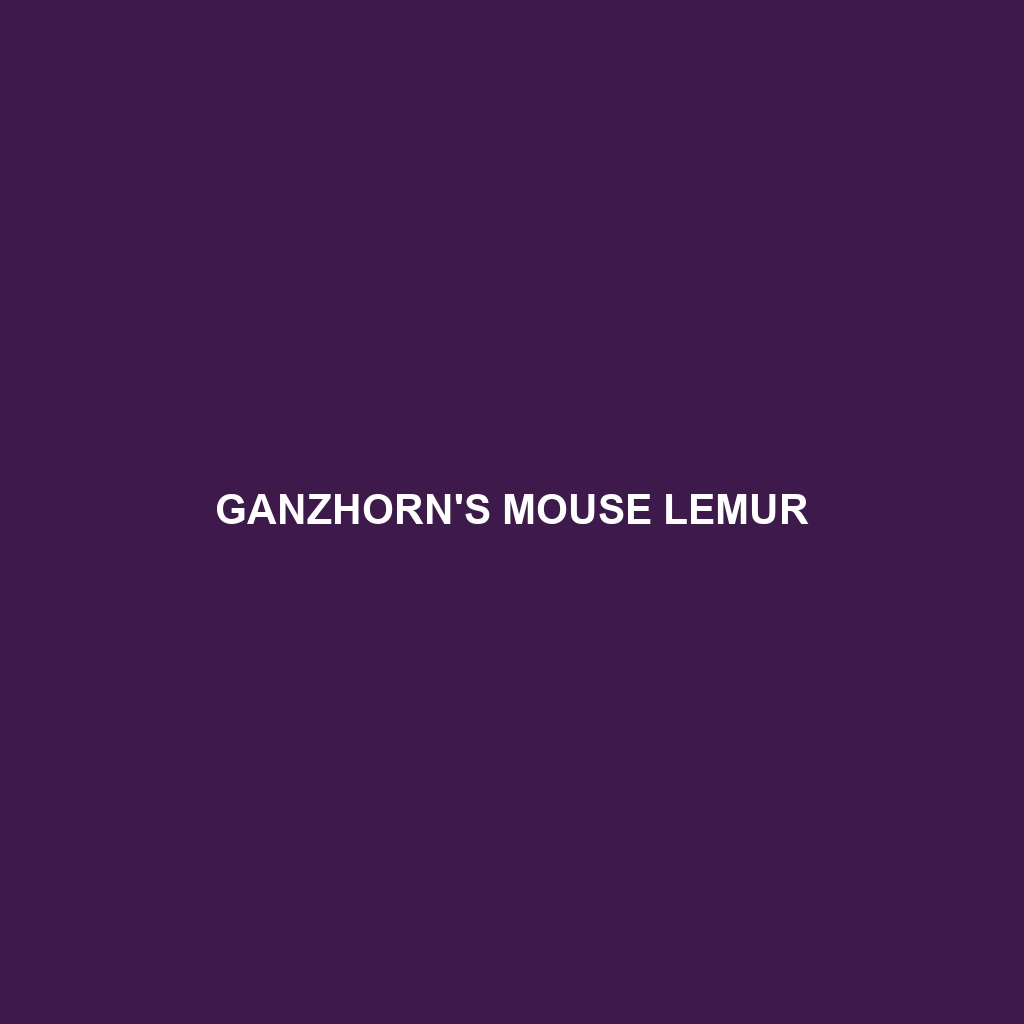Ganzhorn’s Mouse Lemur
Common Name: Ganzhorn’s Mouse Lemur
Scientific Name: Microcebus ganzhorni
Habitat: Ganzhorn’s Mouse Lemur is primarily found in the northeastern rainforests of Madagascar. This species thrives in dense, humid forests, particularly in the Masoala National Park region, where a rich diversity of flora and fauna supports its ecological niche. The forest canopy and understory provide essential cover and foraging opportunities for these small primates.
Physical Characteristics: Ganzhorn’s Mouse Lemur is a small primate, averaging about 10-12 centimeters (approximately 4-5 inches) in length, excluding the tail which can be as long as the body. They have tawny to grayish fur, which helps them blend into their forest habitat. A distinct feature of this species is its large, expressive eyes, adapted for nocturnal living, and a long tail that aids in balance while navigating through trees. Its small, rounded ears and facial markings contribute to its unique appearance.
Behavior: These lemurs are primarily nocturnal and are known for their arboreal lifestyle, spending most of their time in trees. They exhibit solitary to semi-social behavior, often coming together in small groups during the mating season. Their social structure and communication are fascinating, as they use vocalizations and scent marking to establish territory and attract mates. Their playful nature and agility make them a subject of interest for researchers and wildlife enthusiasts alike.
Diet: Ganzhorn’s Mouse Lemur is an omnivore, with a diet that consists mainly of fruits, flowers, insects, and small vertebrates. They have been observed foraging for ripe fruits during the night and are known to consume nectar from flowers, showcasing their role in pollination within their habitat. Their diverse diet is crucial for their survival and contributes to the health of their rainforest ecosystem.
Reproduction: The breeding season for Ganzhorn’s Mouse Lemur typically occurs between September and December. After a gestation period of about 60 days, females give birth to usually one or two offspring. These young lemurs are born underdeveloped and cling to the mother’s belly for the first few weeks before becoming more independent. Maternal care is strong, as mothers are responsible for nurturing and protecting their young during the early stages of life.
Conservation Status: Ganzhorn’s Mouse Lemur is currently classified as **Endangered** according to the International Union for Conservation of Nature (IUCN). The primary threats to this species include habitat destruction due to deforestation, agricultural expansion, and regional mining activities. Conservation efforts are essential to ensure the survival of this unique primate.
Interesting Facts: Despite their small size, Ganzhorn’s Mouse Lemurs are remarkable in their adaptability to various forest environments. They have acute night vision, allowing them to thrive in low-light conditions. Additionally, they exhibit unique behaviors, such as “tactile communication” through gentle touches, which enhances social bonds among individuals.
Role in Ecosystem: Ganzhorn’s Mouse Lemur plays a crucial role in its ecosystem as both a pollinator and seed disperser. By consuming fruits and nectar, they contribute to the propagation of various plant species, thus maintaining the ecological balance of their rainforest habitat. Their presence is vital for the sustainability of Madagascar’s rich biodiversity, and their decline could have cascading effects on the ecosystem.
